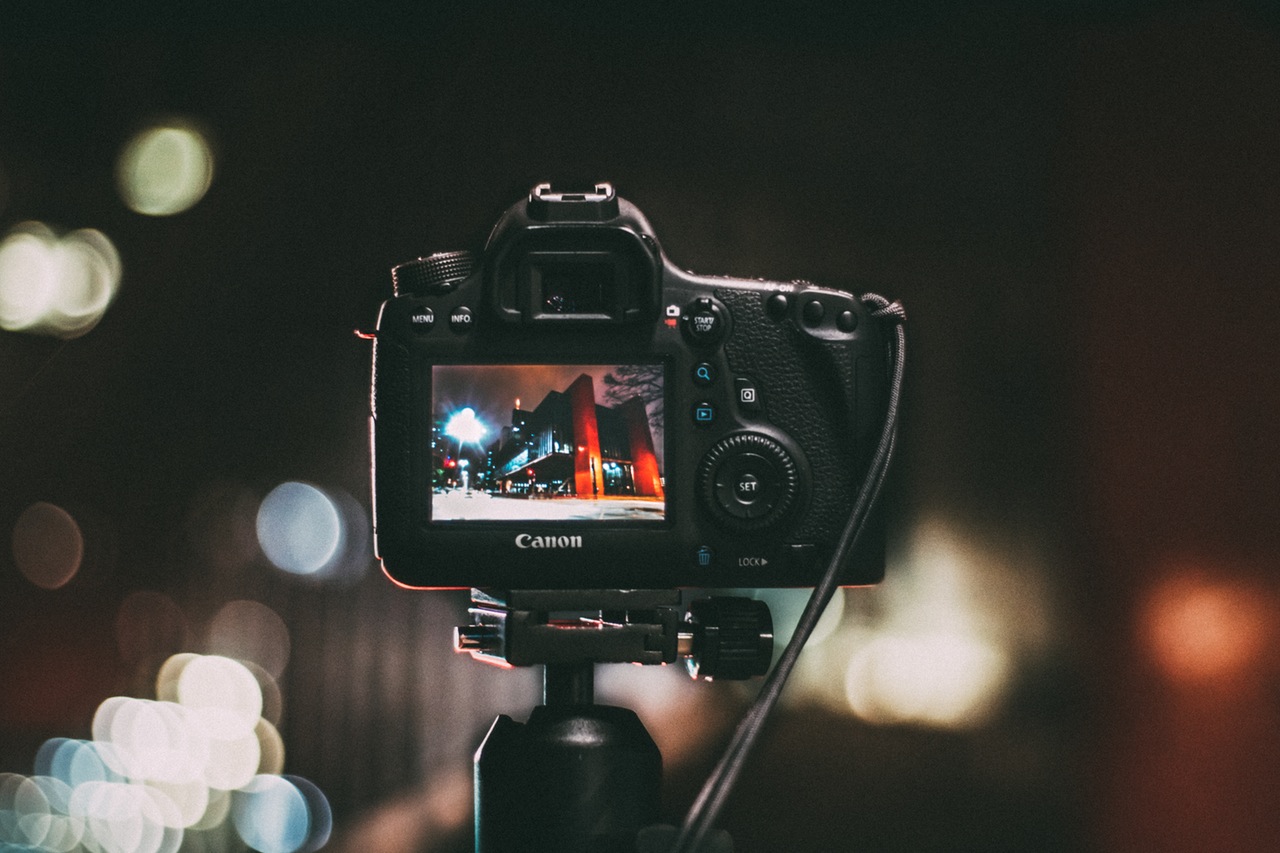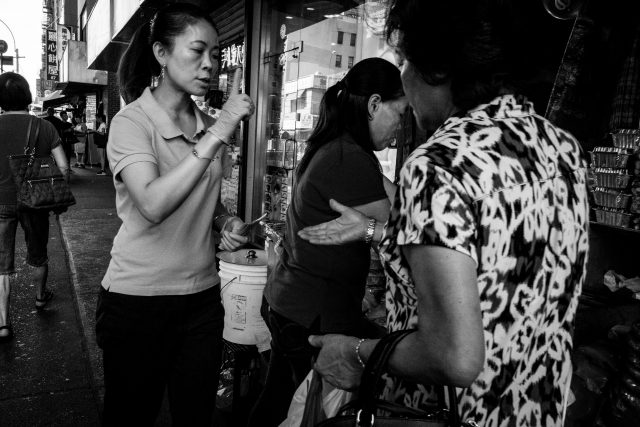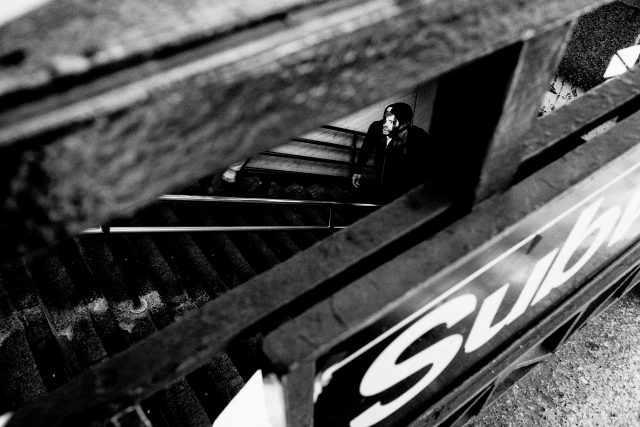When it comes to composing your shots, photographers now have a couple of options: a viewfinder (optical/electronic/hybrid) or a rear LCD screen (most cameras feature both) – using your camera's LCD opens up possibilities, so that's what we're going to discuss today.
Often you will find that regardless of which method a photographer prefers, they are adamantly devoted to it.
For example, I’m sure you’ve encountered those who insist on using a camera with a viewfinder and grouse at the very thought of having to use an LCD to compose. There’s certainly nothing wrong with sticking to a tried and true approach, but it also doesn’t hurt to try something new.
If you’re a viewfinder loyalist, allow me to present to you 4 reasons that may sway you towards composing with your camera’s LCD a bit more often (just to be clear, I am not referring to a DSLR’s live view mode).

1. You Can Get Closer Without Being Intrusive
This point is of particular interest to street photographers who value the ability to blend in with the crowd. I know some of you are nauseated by the idea of holding your camera at arms length and looking like a tourist, but this can work in your favor!
If your goal is in fact to blend in, then depending on where you’re shooting, looking like the stereotypical tourist is exactly what you want.
The general public traffics in certain misconceptions about photographers and their cameras, with a common fallacy being that “professionals” use “big” cameras — you know, the ones where you have to look through the viewfinder.
There’s an intimidation factor there. Using a camera’s LCD for composition can alleviate some of those negative perceptions.
Furthermore, remember that proximity is important in street photography. If you want to convey a sense of intimacy or immediacy, you have to be in the middle of the action, close to your subject. Using the LCD allows you to accomplish this without being intrusive.

2. You Can Keep an Eye on Your Surroundings
When shooting portraits or cityscapes, I prefer the tunnel vision that the viewfinder provides. But one of the advantages of shooting street photography with an LCD screen is that you can compose your shot while still being able to see what’s going on around you.
There may be someone or something entering the scene as you’re about to take your shot; having your peripheral vision unobstructed will allow to quickly determine if you want to avoid or include the incoming subject.

3. You Can Get More Creative with Composition
Not having to raise your camera to your eye in order to capture a shot can be liberating. That feeling of liberation tends to incite fits of creativity — creativity that can be easily applied to composition.
You’d be hard pressed to find a current-market digital camera without an articulating LCD (to be sure, there are a few exceptions), thus allowing you to alter your perspective with a flip of the screen.
Additionally, you can change the composition overlay guide on an LCD according to how you want to frame your shots — 2 x 2, 4 x 4, diagonal lines, etc. These options will help you further experiment with composition.

4. You Can Learn to See in Black and White
I’ve written before on the visual and optical characteristics that one should be aware of when looking to create successful black and white images, such as contrasty scenes, textures, well-defined shapes and moody light/shadows.
It’s a good thing to know how to spot monochrome-worthy scenes with your own two eyes, but your camera’s LCD can definitely make it a more convenient process.
Simply set the LCD to display in black and white, dial in specific settings (adjust highlights and shadows) to correspond to how you would like your images to look, and immerse yourself in visions of monochrome.

Final Thoughts on Using Your Camera's LCD
I am not suggesting that using an LCD is objectively better than using an optical or electronic viewfinder, but there are indeed situations where an LCD has distinct advantages over a viewfinder, some of which are stated above (a few of these advantages may be mitigated especially by an electronic viewfinder versus an optical viewfinder).
Perhaps the best trick accomplished by an LCD is putting the user in a more relaxed frame of mind; when you’re unencumbered by the perceived gravity of your work and the tools used to carry out that work, you can simply enjoy the process of shooting.
Further Resources
- These Ideas on Perspective Will Improve Your Photography Composition by Jason D. Little
- What I Pack for a Day of Street Photography – Urban Gear by Federico Alegria
- Photographers, it’s Time to Give Your Photographic Composition a Proper Overhaul by Dahlia Ambrose
Further Learning
To make sense of all these LCD-viewing ideas and put them into practice, be sure to have a look at this professional guide on Advanced Composition – it really is a fantastic guide that could propel your photography skills beyond the limits you thought possible!





3 Comments
One problem for a lot of us is that many cameras are fitted with an LCD with no ability to tilt it. The advantages of a tilt screen are several. One – that it provides some opportunity to use the screen without backlighting washing out the image. Another – that you can hold the camera to the side, or above you, or below you – which is extremely useful in many different situations. I have one camera with a “tilt” screen (not articulated, unfortunately) which I find very handy for getting shots from a low shooting position, but see other opportunities which go wanting, for the lack of a fully articulated screen.
A tilt screen – or better still, an articulated screen – is useful with street photography and candid photography. OK it’s still possible with a fixed screen, but the others are more useful.
I must say, I was rather taken aback by the thought anyone gets passionate about using EITHER the viewfinder OR the screen. I use whatever I find useful – I am puzzled by the thought that one of them was “right” and the other was “wrong”. That’s weird!
And here I am, turning my Pen-F’s screen around so there’s no chimping and just shooting. What was I thinking?
what is the difference between DSLR’s live view mode and LCD screen?